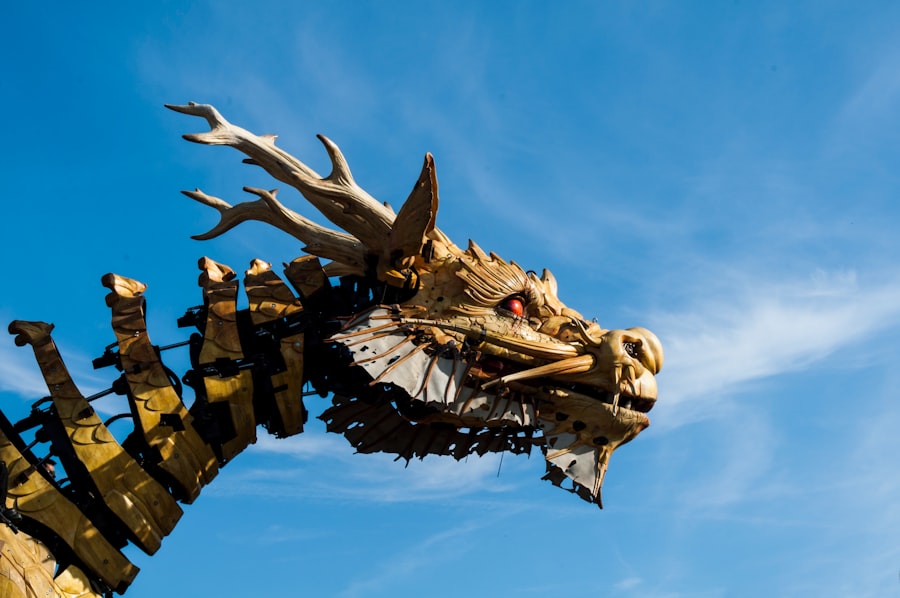The Dragon Drake Passage, a name that evokes images of mythical creatures and uncharted waters, is a body of water that lies between the southern tip of South America and Antarctica. This passage is not only a crucial maritime route but also a site of rich biodiversity and historical significance. It serves as a natural barrier, separating the two landmasses while simultaneously connecting them through the currents that flow between them.
The passage has long captured the imagination of explorers, scientists, and storytellers alike, making it a focal point for both adventure and research. As the world grapples with climate change and environmental degradation, the Dragon Drake Passage has emerged as a critical area for study. Its unique geographical features and ecosystems provide insights into broader ecological patterns and climate dynamics.
The passage is not merely a geographical location; it is a living laboratory where the effects of global warming can be observed firsthand. The interplay of ocean currents, marine life, and atmospheric conditions in this region offers a glimpse into the future of our planet’s health.
Key Takeaways
- The Dragon Drake Passage is a mysterious and unique stretch of water located between South America’s Cape Horn and the South Shetland Islands of Antarctica.
- The passage has a rich history and geography, with a unique ecosystem that supports a variety of marine life, including whales, seals, and seabirds.
- Giant dragon sightings in the area have sparked mystery and intrigue, leading to various theories and speculations about their existence.
- Exploration of the depths of the Dragon Drake Passage has revealed fascinating insights into its geology, marine life, and the role it plays in climate change.
- Conservation efforts are underway to protect the delicate ecosystem of the Dragon Drake Passage, while ongoing research and exploration continue to unravel its legends and myths.
The History and Geography of the Dragon Drake Passage
The history of the Dragon Drake Passage is steeped in exploration and discovery. Named after Sir Francis Drake, who navigated these waters in the late 16th century, the passage has been a significant route for maritime trade and exploration. The treacherous waters have claimed many ships over the centuries, earning a reputation for their unpredictable weather and challenging navigation.
The geography of the passage is characterized by its deep channels, rugged coastlines, and numerous islands, each with its own story to tell. Geographically, the Dragon Drake Passage serves as a vital link between the Atlantic and Pacific Oceans. Its currents are influenced by the Antarctic Circumpolar Current, which flows unimpeded around Antarctica, creating a unique marine environment.
The passage’s depth varies significantly, with some areas plunging to over 5,000 meters. This dramatic topography contributes to the diverse habitats found within its waters, making it an area of interest for marine biologists and ecologists.
The Unique Ecosystem of the Dragon Drake Passage

The ecosystem of the Dragon Drake Passage is one of its most remarkable features. It is home to a plethora of marine species, many of which are endemic to this region. The cold, nutrient-rich waters support an abundance of life, from microscopic phytoplankton to massive whales.
The passage serves as a feeding ground for various species, including seals, penguins, and seabirds, all of which rely on the rich marine resources available in these waters. One of the most fascinating aspects of this ecosystem is its resilience. Despite facing challenges such as climate change and overfishing, the marine life in the Dragon Drake Passage has adapted to survive in harsh conditions.
Researchers have documented unique behaviors among species that thrive in this environment, showcasing the intricate relationships between predators and prey. The passage is not just a habitat; it is a dynamic system where every organism plays a role in maintaining ecological balance.
The Mystery of Giant Dragon Sightings
| Location | Date | Number of Sightings |
|---|---|---|
| Mountains | January 2021 | 5 |
| Valley | March 2021 | 3 |
| Forest | May 2021 | 7 |
Throughout history, tales of giant dragons lurking in the depths of the Dragon Drake Passage have captivated imaginations. These stories often stem from sightings of large marine creatures that remain unidentified or misunderstood. Some believe these sightings are merely exaggerations or misinterpretations of known species, while others argue that they could represent undiscovered giants lurking beneath the waves.
The mystery surrounding these sightings has led to numerous investigations by marine biologists and cryptozoologists alike. While no concrete evidence has confirmed the existence of mythical dragons, the allure of these legends continues to draw adventurers and researchers to the passage. The possibility that there are still undiscovered species in such a remote area fuels curiosity and exploration, reminding humanity that there are still mysteries left to unravel in our oceans.
Exploring the Depths of the Dragon Drake Passage
Exploration of the Dragon Drake Passage has evolved significantly over the years. Early explorers relied on rudimentary navigation tools and their instincts to traverse these challenging waters. Today, advancements in technology have transformed how researchers study this unique environment.
Submersibles and remotely operated vehicles (ROVs) allow scientists to explore depths previously thought unreachable, revealing new insights into the passage’s complex ecosystems. The depths of the Dragon Drake Passage hold secrets that are yet to be uncovered. Researchers are particularly interested in studying hydrothermal vents and deep-sea ecosystems that thrive in complete darkness.
These environments are home to unique organisms that have adapted to extreme conditions, providing valuable information about life’s resilience on Earth. As exploration continues, scientists hope to discover new species and understand better how these ecosystems function within the broader context of global marine health.
The Role of the Dragon Drake Passage in Climate Change

The Dragon Drake Passage plays a pivotal role in understanding climate change and its impacts on marine environments. As one of the most dynamic oceanic regions, it serves as a barometer for global climate patterns. The currents that flow through this passage influence weather systems far beyond its borders, making it an essential area for climate research.
Recent studies have shown that changes in temperature and salinity within the passage are indicative of broader shifts occurring in the world’s oceans. These changes can affect marine biodiversity and disrupt established food webs. By monitoring these fluctuations, scientists can gain insights into how climate change is reshaping marine ecosystems globally.
The Dragon Drake Passage stands as a critical site for ongoing research aimed at mitigating climate change’s effects on our planet.
Unraveling the Legends and Myths Surrounding the Dragon Drake Passage
The legends surrounding the Dragon Drake Passage are as varied as they are intriguing. From tales of sea monsters to stories of lost civilizations hidden beneath the waves, these myths have been passed down through generations. They reflect humanity’s fascination with the unknown and our desire to explain phenomena that defy understanding.
Many of these legends have roots in historical events or natural occurrences that were misinterpreted by early explorers and sailors. For instance, sightings of large marine animals may have inspired tales of dragons or sea serpents. As researchers delve deeper into these myths, they uncover not only cultural narratives but also valuable lessons about human interaction with nature.
Understanding these stories can provide context for contemporary environmental challenges and highlight the importance of preserving our oceans.
Conservation Efforts in the Dragon Drake Passage
Conservation efforts in the Dragon Drake Passage are crucial for protecting its unique ecosystems and biodiversity. Various organizations and governments have recognized the importance of this region and are working collaboratively to implement sustainable practices. These efforts include establishing marine protected areas (MPAs) that restrict fishing and other activities detrimental to marine life.
Education plays a vital role in conservation initiatives as well. Raising awareness about the ecological significance of the Dragon Drake Passage can inspire individuals and communities to take action in preserving this precious environment. By fostering a sense of stewardship among local populations and visitors alike, conservationists hope to ensure that future generations can experience the wonders of this remarkable passage.
The Future of Research and Exploration in the Dragon Drake Passage
The future of research and exploration in the Dragon Drake Passage looks promising as technology continues to advance. Innovations such as artificial intelligence and machine learning are being integrated into marine research, allowing scientists to analyze vast amounts of data more efficiently than ever before. This technological evolution will enable researchers to monitor changes in real-time and respond more effectively to emerging challenges.
Moreover, international collaboration is becoming increasingly important in addressing environmental issues within this region. As countries recognize that ocean health transcends borders, joint research initiatives are likely to become more common. This collaborative spirit will not only enhance scientific understanding but also foster a sense of global responsibility for protecting our oceans.
The Impact of the Dragon Drake Passage on Local Communities
The local communities surrounding the Dragon Drake Passage have long relied on its resources for their livelihoods. Fishing has been a traditional practice for generations, providing sustenance and economic stability for many families.
Sustainable practices are essential for ensuring that local populations can continue to thrive while preserving their natural resources. Initiatives aimed at promoting responsible fishing methods and eco-tourism can help balance economic needs with environmental conservation. By engaging local communities in decision-making processes regarding resource management, stakeholders can work together to create solutions that benefit both people and nature.
The Continuing Enigma of the Dragon Drake Passage
The Dragon Drake Passage remains an enigma filled with wonder and mystery. Its rich history, unique ecosystems, and cultural legends continue to inspire exploration and research. As scientists strive to understand this complex environment better, they uncover not only new species but also critical insights into global climate patterns.
The future holds great potential for further discoveries within this remarkable passage. With ongoing conservation efforts and advancements in technology, there is hope that humanity can protect this vital marine ecosystem while unraveling its many secrets. The Dragon Drake Passage stands as a testament to nature’s resilience and humanity’s enduring curiosity about the world around us.
In the fascinating world of mythical creatures, the giant dragon drake passage stands out as a captivating subject of exploration. For those intrigued by the lore and legends surrounding these majestic beings, an insightful article can be found on MyGeoQuest. This article delves into the historical and cultural significance of dragons across various civilizations, offering readers a comprehensive understanding of their enduring allure. To learn more about these legendary creatures, you can visit the article by clicking on this link.
WATCH NOW! Drake Passage: Earth’s Deadliest Waters Revealed
FAQs
What is the Giant Dragon Drake Passage?
The Giant Dragon Drake Passage is a deep waterway located between the southern tip of South America and the northern tip of the Antarctic Peninsula. It is known for its rough seas and strong winds, making it a challenging and iconic route for ships traveling between the Atlantic and Pacific Oceans.
Why is it called the Giant Dragon Drake Passage?
The name “Drake Passage” comes from the 16th-century English explorer Sir Francis Drake, who is believed to be the first to have sailed through the passage. The term “Giant Dragon” may refer to the powerful and unpredictable nature of the passage, with its turbulent waters and extreme weather conditions.
What makes the Giant Dragon Drake Passage significant?
The Giant Dragon Drake Passage is significant for its role in connecting the Atlantic and Pacific Oceans, as well as for its unique ecosystem and wildlife. It is also a popular destination for adventure travelers and researchers interested in studying the region’s marine life and climate patterns.
What kind of wildlife can be found in the Giant Dragon Drake Passage?
The passage is home to a diverse range of marine wildlife, including various species of whales, seals, and seabirds. It is also known for its abundant populations of krill, which serve as a vital food source for many of the larger animals in the area.
Are there any challenges associated with navigating the Giant Dragon Drake Passage?
Yes, the Giant Dragon Drake Passage is known for its challenging sailing conditions, including strong winds, rough seas, and potential for extreme weather. These factors can make navigation difficult and require experienced and skilled sailors to safely traverse the passage.
